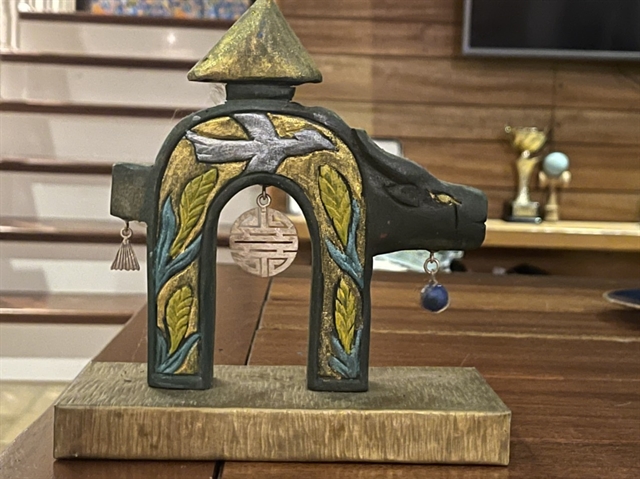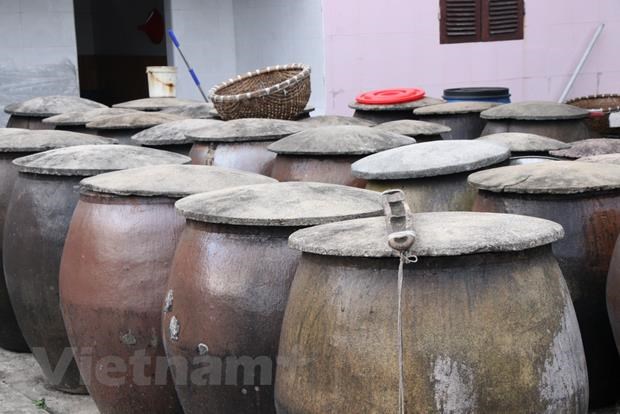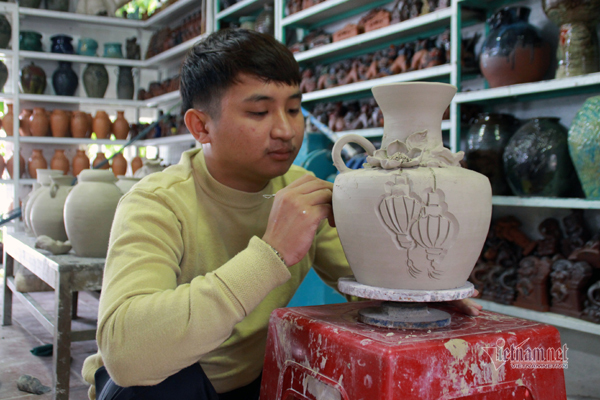- © Copyright of Vietnamnet Global.
- Tel: 024 3772 7988 Fax: (024) 37722734
- Email: evnn@vietnamnet.vn
craft villages
Update news craft villages
The essence of Chu Dau pottery
Chu Dau is a brand that has spread far and wide and has connected the quintessence of pottery, bringing the country's traditional ceramic products to tourists both home and abroad.
Reclaimed driftwood inspires greener tourism in Hội An
Vast amounts of driftwood and rubbish pile up at Cua Dai beach in the south-central province of Quang Nam in flood season every October, costing the much-favoured coastal destination time and money in cleaning up.
Hanoi’s birdcage craft village is unique in Vietnam
The reputation of the birdcage craft village comes from the artisans’ great knowledge about the behavior and the shape of different birds to make suitable cages in terms of both shape and size.
The story of a glass blowing craftsman
Mr. Ho Van Gung, in Giap Long Village, Thuong Tin District, Hanoi, has dedicated his whole life to keeping the traditional glass blowing craft alive.
Unique bamboo dragonflies are income earners for villagers on Hanoi’s outskirts
The steps to create bamboo dragonflies are simple but require meticulosity and accuracy in every detail.
Sa Chau fish sauce - specialty condiment of Nam Dinh province
Sa Chau village has long been famous for the traditional production of fish sauce whose pungent smell can grasp any visitor’s attention before they reach the village’s gate.
Dong Cuu - the only royal robe embroidering village in Hanoi
Dong Cuu village has long been famous for its traditional embroidery, especially the making of royal robes for kings of feudal dynasties in Vietnam, and the craft has still been upheld nowadays.
Nhat Tao Bell a valuable antique
Nhat Tao Bell, housed at Nhat Tao temple in Hanoi, is the sole antique made in the 10th century whose unique shape is different from others in pagodas and temples in Vietnam.
Tiger figurines: new mascot for the Year of the Tiger
Thousands of figurines depicting a tiger holding a gemstone in its mouth are being produced every day and selling out almost immediately by artisans in Tan Uyen Town, Binh Duong Province.
The 100-year-old incense-making village in Saigon before Tet
Although the time is ripe for selling incense sticks, people do not see many of them in Le Minh Xuan incense-making village in HCM City.
Oodles of glass noodles ready for Tet at So Village
The canna noodles, or glass noodles, of So Village in Tan Hoa Commune, Quoc Oai District, have long been known as a specialty of the Hanoi countryside, loved far and wide. They are probably the most famous noodles in the country.
Tru Son clay pot making village ramps up production for Tet
Though not sophisticated, finicky or elaborate like Bat Trang or Phu Lang potteries, the clay pot making village in Tru Son Commune, Do Luong District, Nghe An Province is as rustic as the name itself.
Northern village finds its silk saviour
The greatest value of the commune’s tussore is that it is created from the love, and the skilful hands of craftswomen who have had the knowledge passed down for centuries.
Hundred-year-old incense-making village of ethnic Nung An
The incense making profession of the Nung An people in Phia Thap village has been passed down from generation to generation. All villagers know how to make incense.
Craft steel village forges ahead
The small road leading to Da Sy forging village is winding. From afar, the sound of anvils and hammers can be heard.
Clay transformed into special creations by 9X youngster
Upon graduating from high school, Mr. Lam chose to follow in the footsteps of his parents by pursuing a career in ceramics. He has made a number of special items as a result of his experimentation and study.
Glittering thin gold leaves from Kieu Ky Village
Kieu Ky Village in Gia Lam District, which is located on the north bank of the Red River about 15km from the centre of Hanoi, is famous for its craft of gold and silver laminating.
Quat Dong embroidery village
About 25km from Hanoi’s centre, Quat Dong village is well-known for its colorful handmade embroidered products reflecting the Vietnamese people and land which are favored by domestic customers and foreign friends.
Quang Phu Cau incense-making village
Before the bulletin comes to an end, let’s join us in a visit to Quang Phu Cau village, an incense making village in Ung Hoa district in Hanoi.
Incense-making Quang Phu Cau village
Quang Phu Cau village in Ung Hoa district, 35 kilometres from downtown of Hanoi, is famous for its century-old craft of making incense.


















